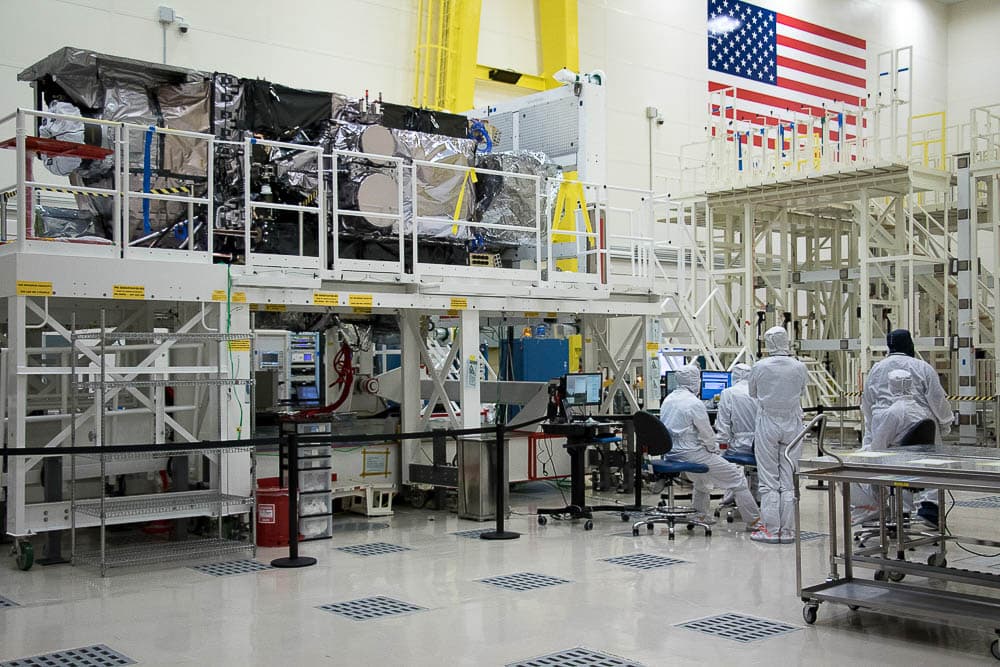
Having completed assembly of National Oceanic and Atmospheric Administration’s GOES-S satellite, Lockheed Martin announced Tuesday the weather monitoring satellite is undergoing mechanical and environmental testing in advance of its 2018 launch.
Does GOES-S, or Geostationary Operational Environmental Satellite-S, sound familiar to you?
That’s because you’ve met this baby before, when we took you behind the scenes at Lockheed Martin before United Launch Alliance shot the first of the series, the GOES-R, into space on Nov. 19. But that was even before the GOES-S was fully assembled. Gosh, they grow up so fast.
Now that Lockheed Martin has completed assembly, the GOES-S is undergoing testing to simulate environmental conditions during launch and in space.

Most recently, the GOES-S completed a reverberant acoustics test and sine vibration test, which exposed the satellite to the sounds and feels it will experience aboard a United Launch Alliance Atlas V rocket.
The GOES-S is the second in a series of four next generation weather satellites that will pull weather forecasting technology out of the stone ages, a.k.a. the ‘80s.
The GOES-S and its three sister satellites, GOES-R, GOES-T and GOES-U, have three times the amount of channels, four times the resolution and will scan five times faster than the existing weather satellites.
GOES-S’ cutting edge instruments will provide full earth scans every 15 minutes, according to GOES-R Vice President and program manager Larry Gasparrini. And the most noticeable change will impact extreme weather monitoring. NOAA will be able to provide images of extreme weather development to local forecasters every 30 seconds, which makes for a close to real-time time lapse.
The GOES-R, which NOAA renamed GOES-16 (now that it is in space), is in the midst of calibrations that will take about six months to complete, so sometime around May 2017, weather nerds should expect to notice the upgrades.
United Launch Alliance is a joint venture between Lockheed Martin Space Systems and Boeing Defense, Space & Security. The Centennial-based partnership formed in December 2006 to provide launch services to the U.S. government.
Multimedia business & healthcare reporter Chloe Aiello can be reached via email at [email protected] or twitter.com/chlobo_ilo.
Subscribe to Denverite’s newsletter here.













